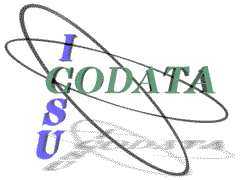Senckenberg Research Institute and Museum, Frankfurt
Botanical Garden and Botanical Museum Berlin-Dahlem
Senckenberg Research Institute and Museum, Frankfurt |
Botanical Garden and Botanical Museum Berlin-Dahlem |
TDWG 2000: Digitising Biological Collections
Taxonomic Databases Working Group, 16th Annual Meeting
Senckenberg Museum, Frankfurt, Germany, November 10-12, 2000
* Zoological Museum Amsterdam, University of Amsterdam, P.O.
Box 94766, NL-1090 GT, Amsterdam, The Netherlands
** Zoological Museum, Entomology Department, Universitetsparken 15, DK-2100
Copenhagen, Denmark
*** Institut de Systématique (CNRS FR 1541), Muséum National d'Histoire
Naturelle (MNHN), Laboratoire d'Ichtyologie générale et appliquée, 43 rue
Cuvier, F-75231 Paris cedex 05, France
[Poster presentation]
The Fauna Europaea Project, funded by the European Commission within its 5th Framework Programme for Research and Technology Development (FP5), will assemble into a database an unique comprehensive list of scientific valid accepted names of all living multicellular European terrestrial and freshwater animal species (target: 100,000 spp. and sspp.).
Important synonyms, distribution by country (at least at a predefined geo-political level) covering Europe (i.e., to Ural excluding Caucasus region), and selected additional data will be registered when easily available, or linked through the Internet.
The principles of the work are based on the use of international standards, as the Zoological Code and the TDWG geographic standard, to ensure the future interoperability with specimen collection databases, and on a consensus more than on an authoritative approach.
A by-product of the project is the production of an overview of the state of art with respect to our knowledge and expert capacity on the European fauna.
The foreseeable network of projects like Fauna Europaea, Euro+Med PlantBase, ITIS, and many national, regional or taxon-oriented initiatives, all being gathered by Species2000, is the most important advance in the management of nature labelling (biodiversity indexing) since Linnaeus. It is certainly a basic condition to support access to specimen collection databases with a high reliability and efficiency for good-quality information.
See http://www.faunaeur.org for further information.
TDWG | Participants | Presentations | Senckenberg Museum | BGBM Biodiversity Informatics
|
This meeting was co-sponsored by the Committee on Data for Science and Technology (CODATA) |
 |
Page editor: W. Berendsohn, wgb@zedat.fu-berlin.de. © BGBM 2000.